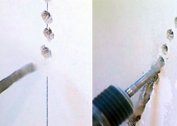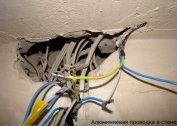Ferroresonant voltage stabilizer has long been actively used not only in everyday life, but also in industry. Devices of this class make it possible to equalize AC voltage. The principle of functioning is based on the effect of electromagnetic resonance in the oscillatory circuit. Such normalizers have many advantages, but also have their drawbacks.
Ferroresonance phenomena in electric networks
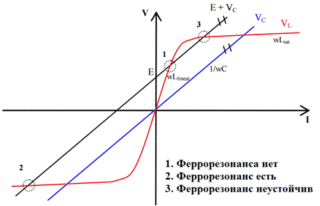 The main factors that generate ferroresonance phenomena in electric networks are capacitive and inductive type elements. They are able to form oscillatory circuits during switching periods. This effect is especially noticeable in power type transformers, linear boost boosters, shunt circuits and similar devices that are equipped with a massive winding.
The main factors that generate ferroresonance phenomena in electric networks are capacitive and inductive type elements. They are able to form oscillatory circuits during switching periods. This effect is especially noticeable in power type transformers, linear boost boosters, shunt circuits and similar devices that are equipped with a massive winding.
This phenomenon is of 2 types: resonance of currents and voltage.
Voltage ferroresonance is possible when there is an inductance in the network characterized by a non-linear current-voltage property. This characteristic is characteristic of inductors, where the cores are made from ferromagnetic components. This is especially true for rectifiers of the NKF line. Such a negative phenomenon is caused by a small indicator of the resistance of the ohmic and inductive types with respect to power transformers.
Ferroresonance in a voltage transformer
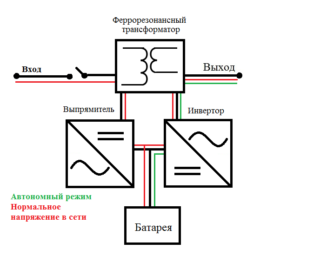 When the voltage transformer is connected to the network, sequentially combined LC circuits are formed in it, which are a resonant type circuit. When the inductive element with the nonlinear current-voltage property is connected in series to the capacitive type element, the voltage in this zone of the circuit is characterized as active-inductive.
When the voltage transformer is connected to the network, sequentially combined LC circuits are formed in it, which are a resonant type circuit. When the inductive element with the nonlinear current-voltage property is connected in series to the capacitive type element, the voltage in this zone of the circuit is characterized as active-inductive.
At the end of a certain time period, the voltage value at the inductive element becomes peak, the magnetic circuit is powered, and the voltage at the capacitive type component continues to grow. Ferroresonance in a voltage transformer occurs when the voltage of the inductance and the capacitive element becomes equivalent.
The fast transition of the applied voltage from the active-inductive type to the active-capacitive type is referred to as phase reversal. This effect is dangerous for electrical appliances.
Ferroresonant stabilizers
Ferroresonant rectifiers are not equipped with a built-in voltmeter, making it difficult to measure the output voltage indicator of the network. Adjusting the voltage value with your own hands will not work. Ferroresonance type stabilizers partially distort real readings, the error is up to 12%.
Those who have been using such devices for a long time should remember that they are capable of emitting a magnetic field, which can interfere with the proper functioning of household electrical equipment. Stabilizers of this class are configured in the factory, they do not require any additional settings in everyday life.
The effect of the stabilizer on the technique
A ferroresonant voltage stabilizer, the principle of which is not simple, acts on household appliances as follows:
- Radio receiver - the sensitivity of signal reception can be reduced, the indicator of output power is significantly reduced.
- Music center - the output power of such equipment can significantly decrease, erasing and recording of new discs is significantly deteriorated.
- TV - when connected to a stabilizer, you can observe a significant decrease in picture quality on TV, individual colors are not transmitted correctly.
The electrical circuit of modern ferroresonance type normalizers is improved, which allows them to withstand heavy loads. Such devices can guarantee fine adjustment of the mains voltage. The correction procedure is performed by the transformer.
Operating modes
The operational modes of stabilizers depend on a number of factors. The power factor and device class have a direct effect. The power characteristics of the device can be different, they must be selected taking into account the type of electrical equipment to be connected.
The operation modes of the rectifier depend on these types of load:
- inductive
- active;
- capacitive.
Active load in its pure form is extremely rare. It is necessary only in those circuits where the variable value of the device has no restrictions. Capacitive loads can be used only for those rectifiers that have low power.
The principle of operation of ferroresonant stabilizers
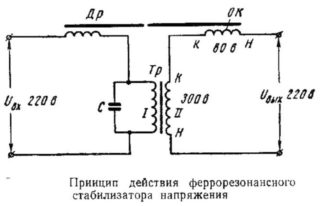 The primary type winding to which the input voltage is applied is located on the magnetic circuit. It has a large cross section, which allows you to keep the core in an unsaturated state. At the input, the voltage forms magnetic fluxes.
The primary type winding to which the input voltage is applied is located on the magnetic circuit. It has a large cross section, which allows you to keep the core in an unsaturated state. At the input, the voltage forms magnetic fluxes.
An output voltage is formed at the terminals of the secondary winding. A load, which is located on the core, has a small cross section, and is in a saturated state is connected to this winding. In case of anomalies in the mains voltage and magnetic flux, its value is not actually modified, and the EMF indicator remains unchanged. During an increase in magnetic flux, a certain proportion of it will be closed on a magnetic shunt.
The magnetic flux takes a sinusoidal shape and when it approaches the amplitude index, its individual section goes into saturation mode. The increase in magnetic flux stops. The closure of the flux along the magnetic shunt will be carried out only when the magnetic flux index is compared with the amplitude.
The presence of a capacitor allows the ferroresonant stabilizer to work with an increased power factor. The stabilization rate depends on the level of the slope of the horizontal type curve with respect to the abscissa. The slope of this section is significant, so it is impossible to find a high level of stabilization without auxiliary equipment.
Advantages and disadvantages
Among the key advantages of ferroresonant rectifiers are:
- resistance to overloads;
- wide range of operational values;
- speed of adjustment;
- current takes the form of a sine;
- high leveling accuracy.
But with all these advantages, devices of this class also have their disadvantages:
- The quality of operation depends on the load indicator.
- During operation, external electromagnetic interference is generated.
- Unstable operation at light loads.
- High weights and sizes.
- Noise during operation.
Most modern models lack such disadvantages, but they stand out at a considerable cost, sometimes higher than the price of a UPS. Also, the devices are not equipped with a voltmeter, which makes it impossible to adjust them.
Selection tips
The design of rectifiers is constantly being upgraded, the quality of their circuits is improved, which makes it possible to transfer significant ferroresonant overvoltages. Modern models are distinguished by a high level of performance, tuning accuracy and a long service life. Modes are set by the power characteristics of the device and its type.
The main condition for choosing a ferroresonant stabilizer is the place of its connection. Usually it is installed at the entrance of the power grid to the room or near household appliances. If the rectifier is installed for all equipment, it is necessary to select devices with a high power level and connect them immediately behind the switchboard.
DIY ferroresonant voltage regulator
Ferroresonance circuitry is the easiest for hand-made manufacturing. Its functioning is based on the effect of magnetic resonance.
The design of a fairly powerful ferroresonance type rectifier can be assembled from three elements:
- primary throttle;
- secondary throttle;
- capacitor.
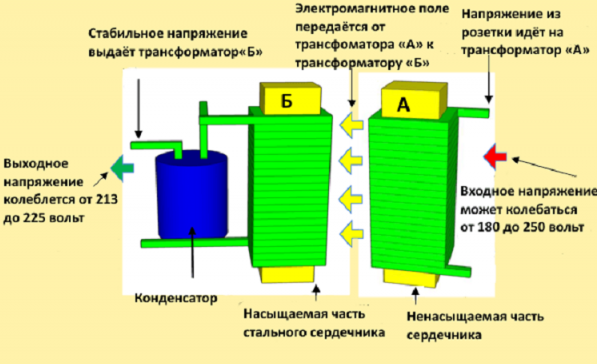
At the same time, the simplicity of this option is accompanied by a whole set of inconveniences. A powerful normalizer made according to the ferroresonance scheme comes out massive, bulky and heavy.


